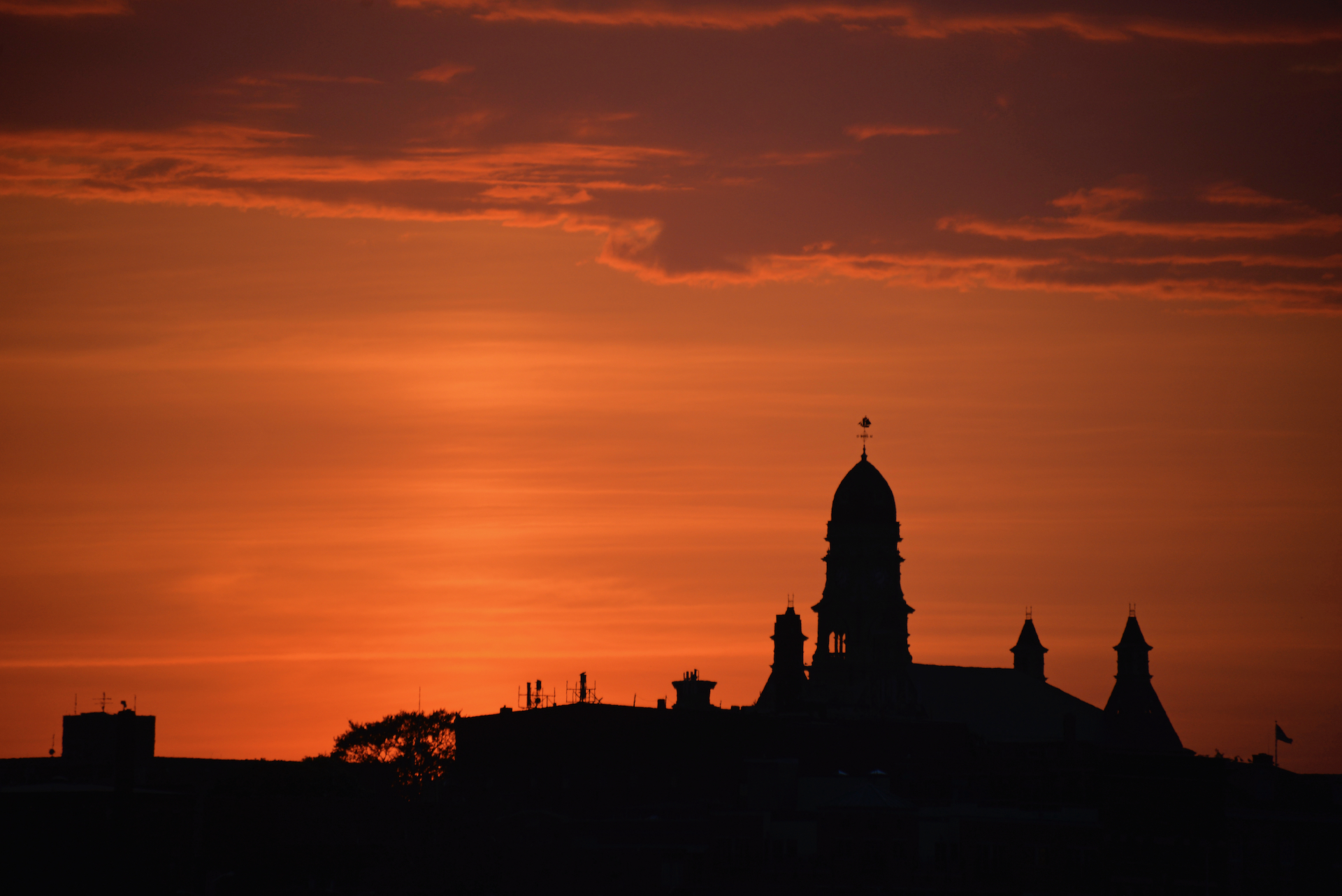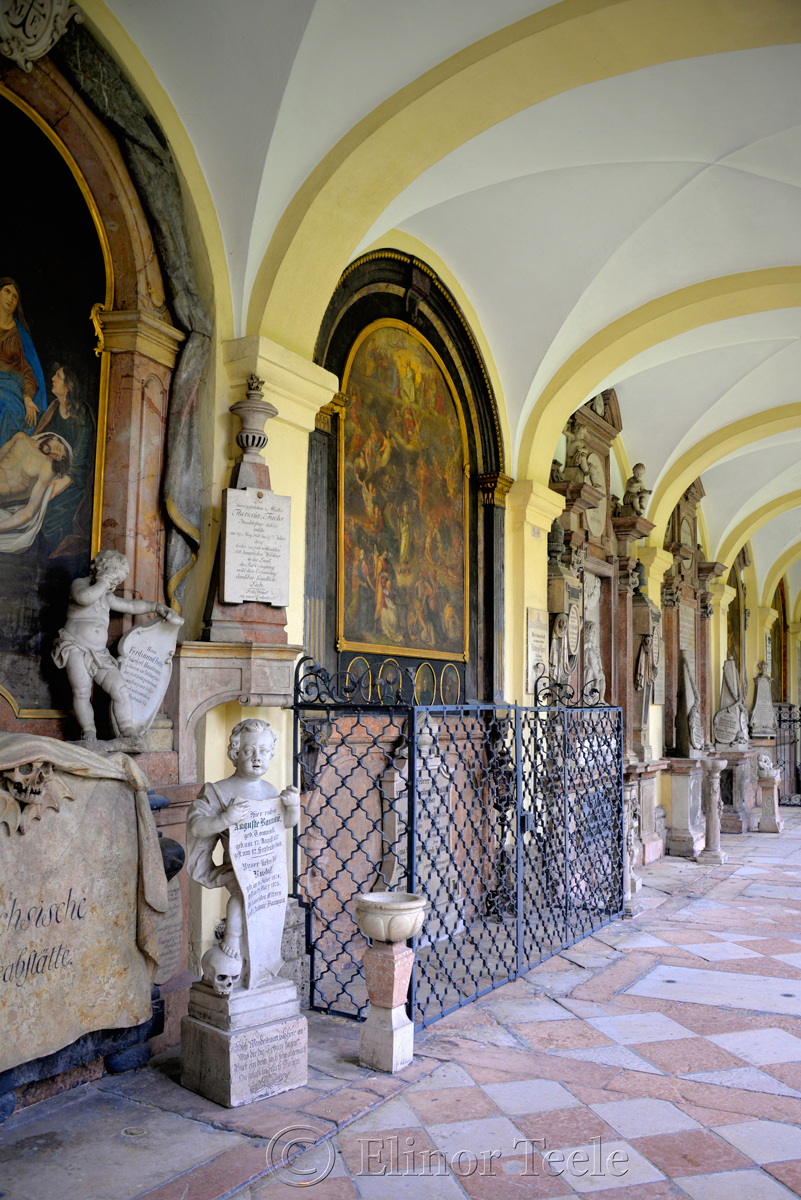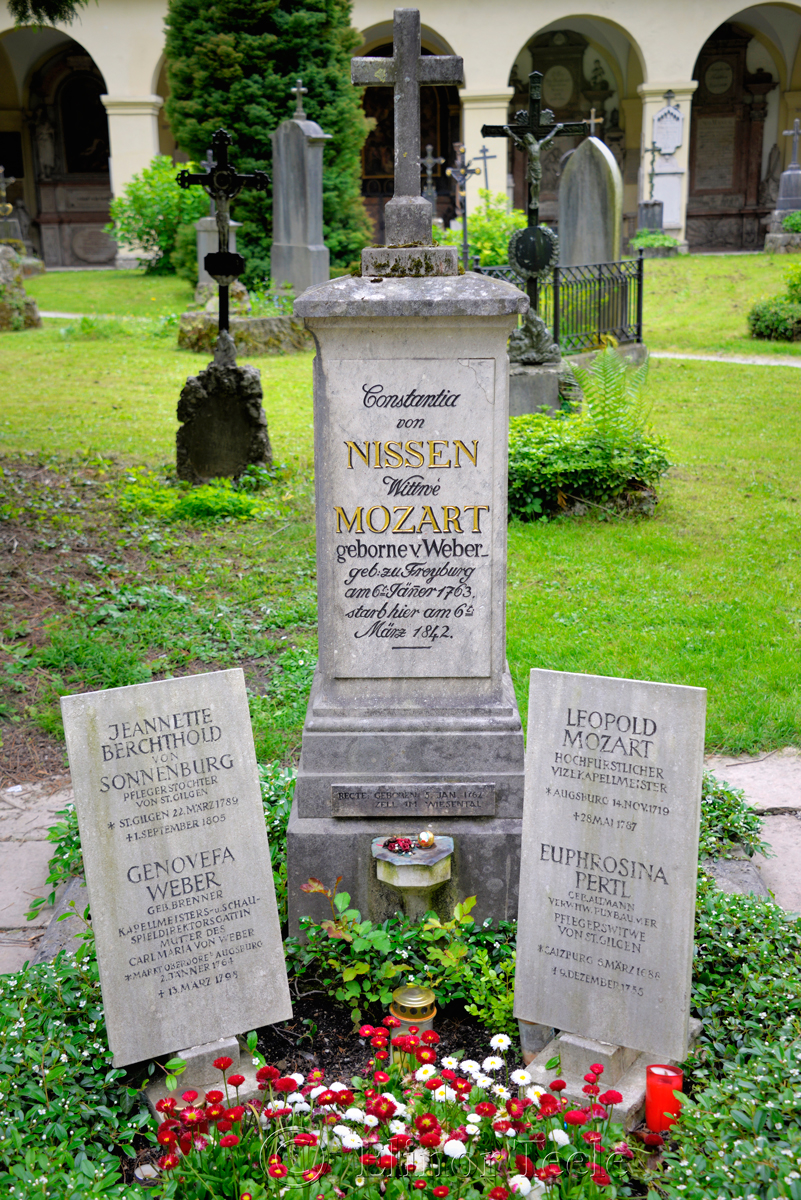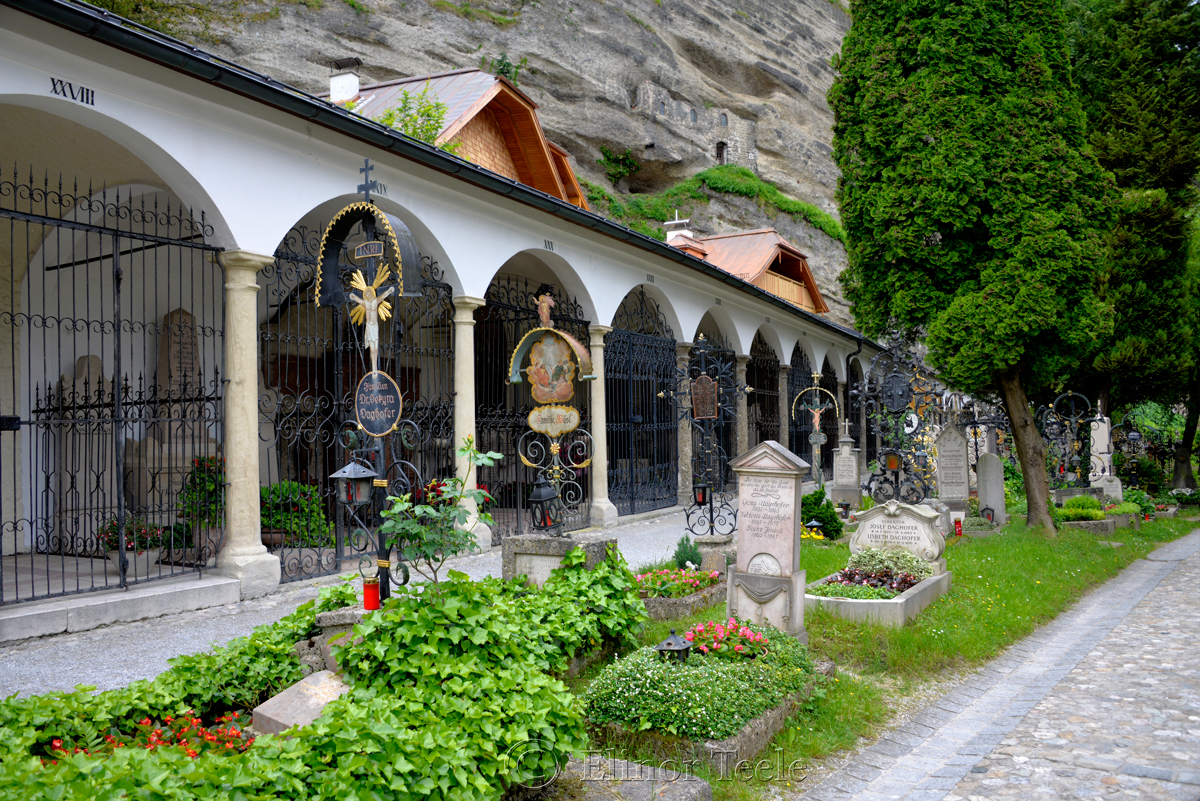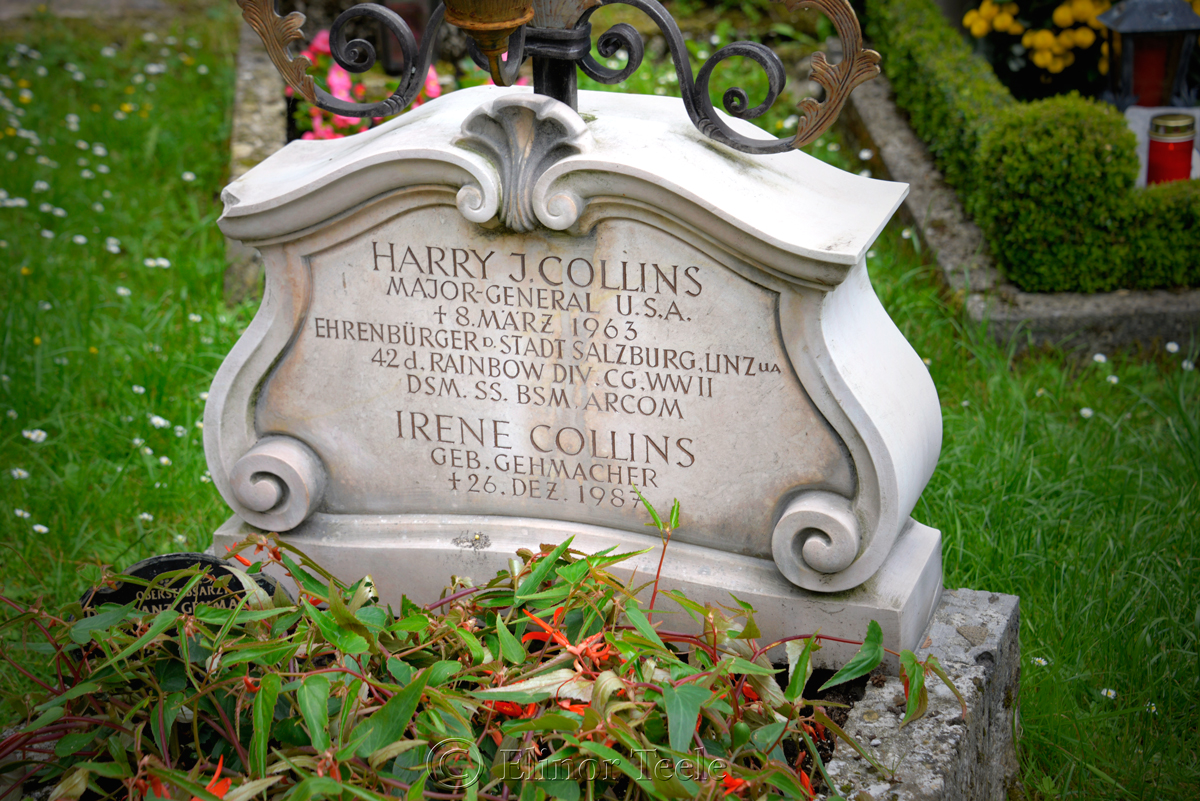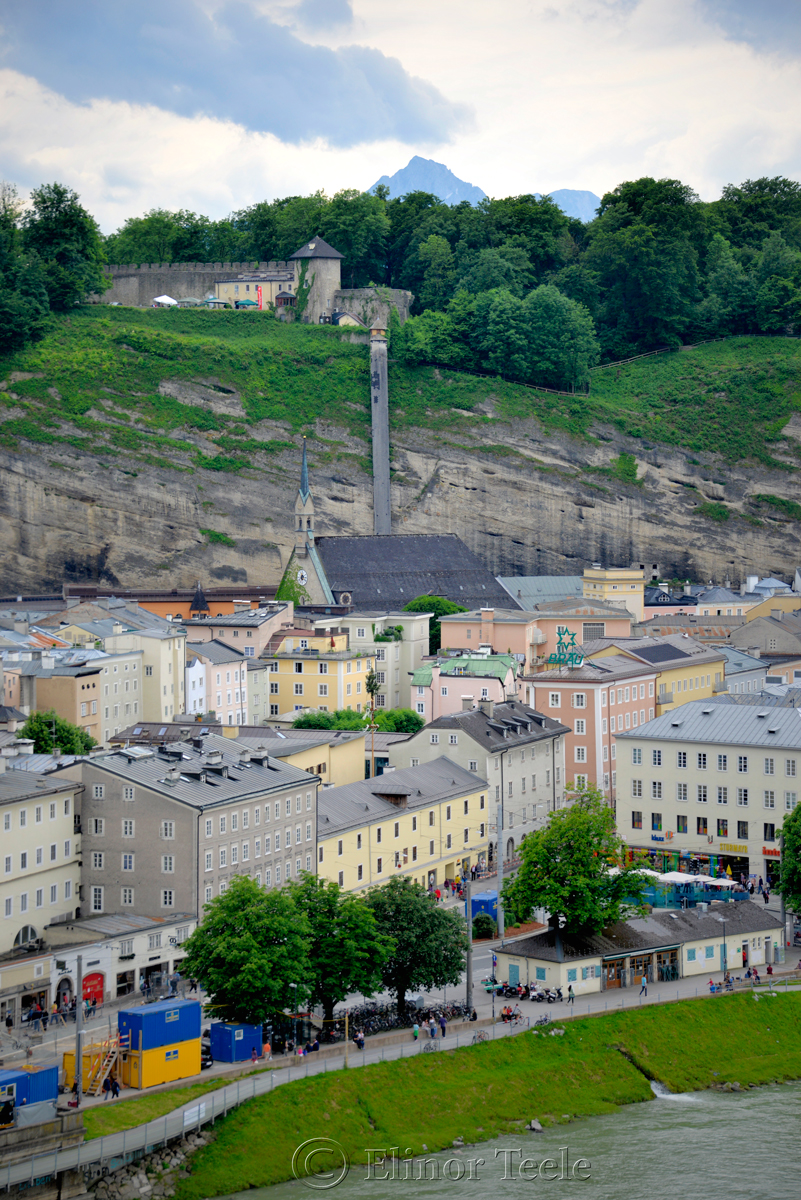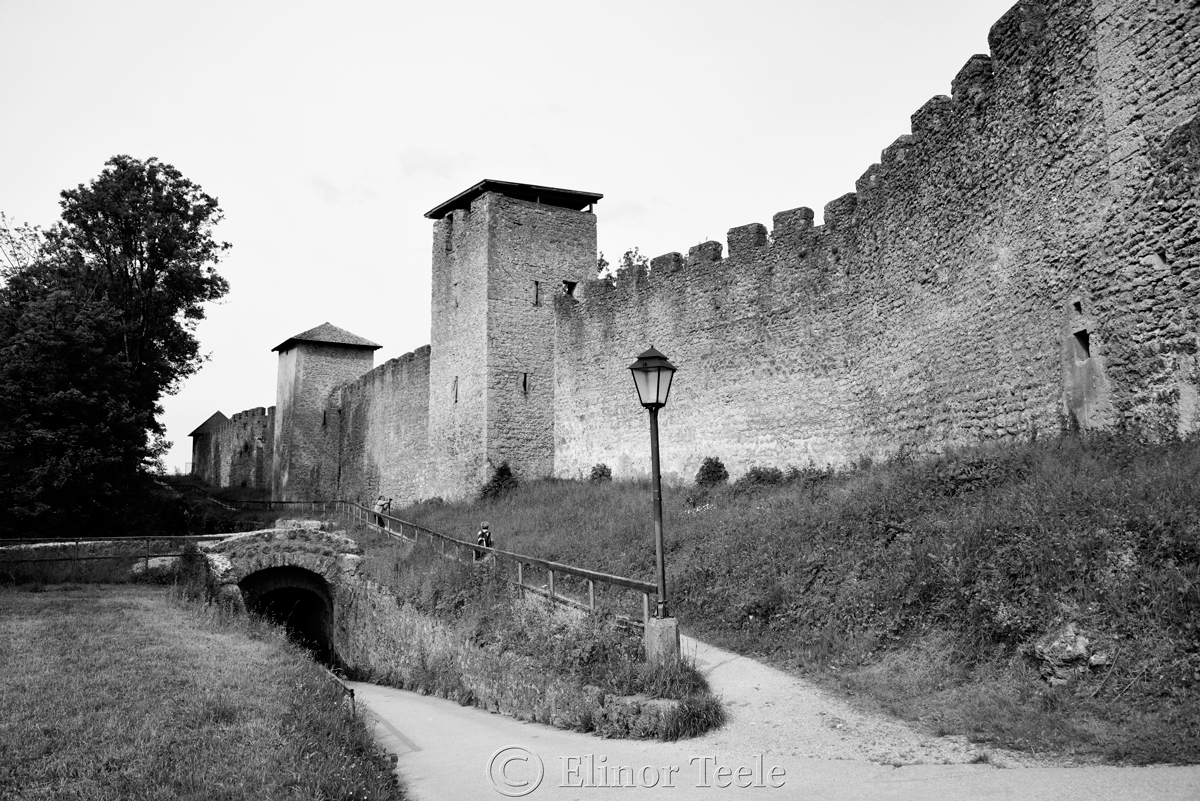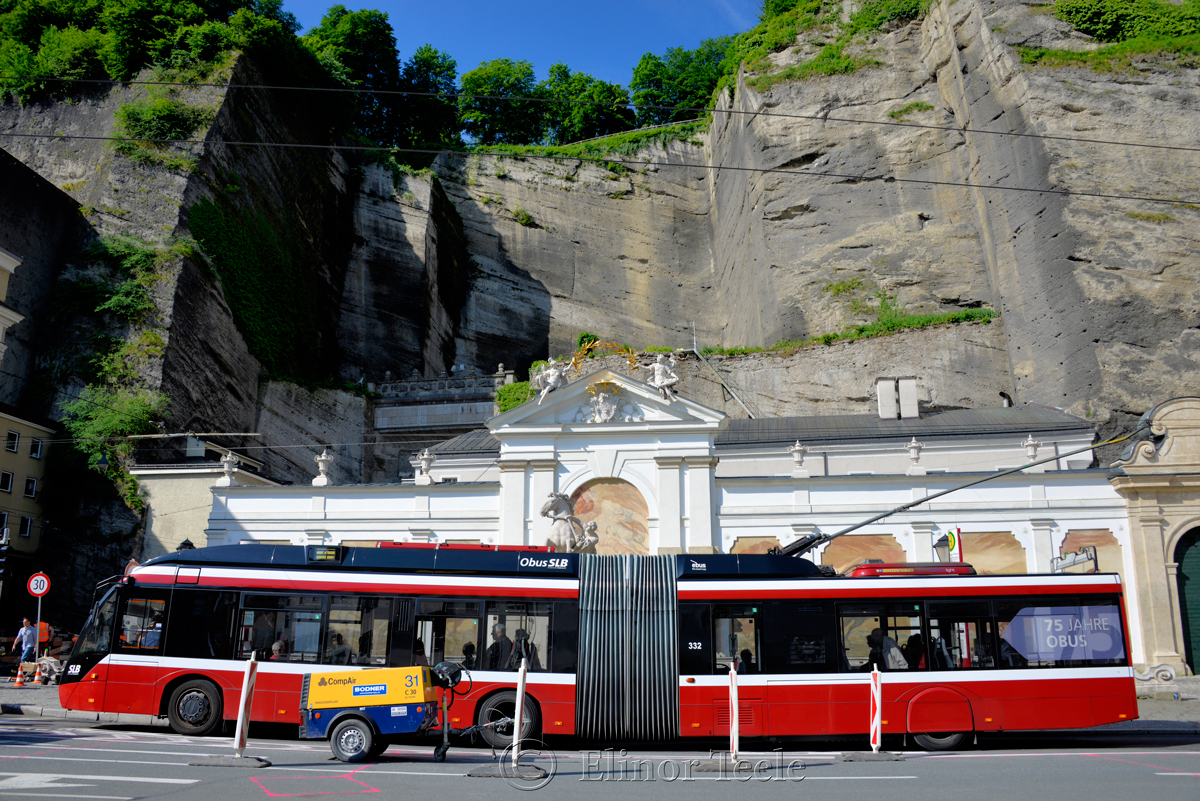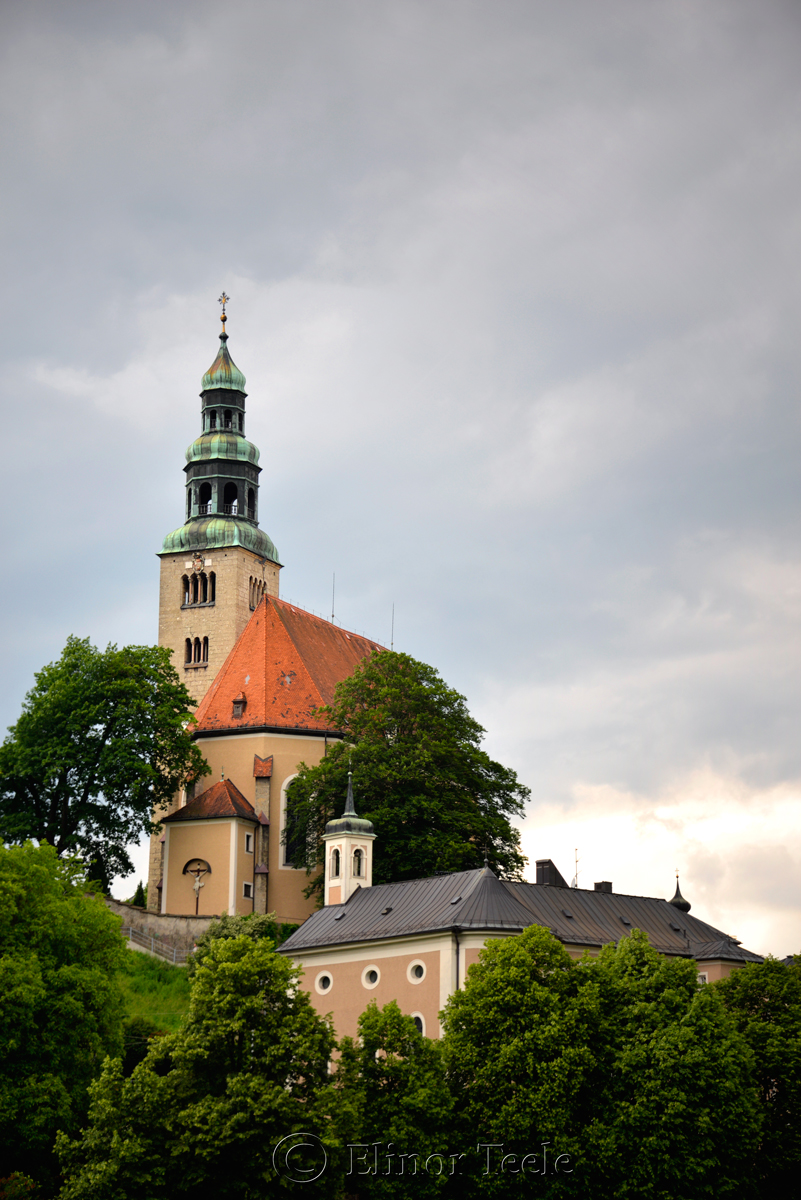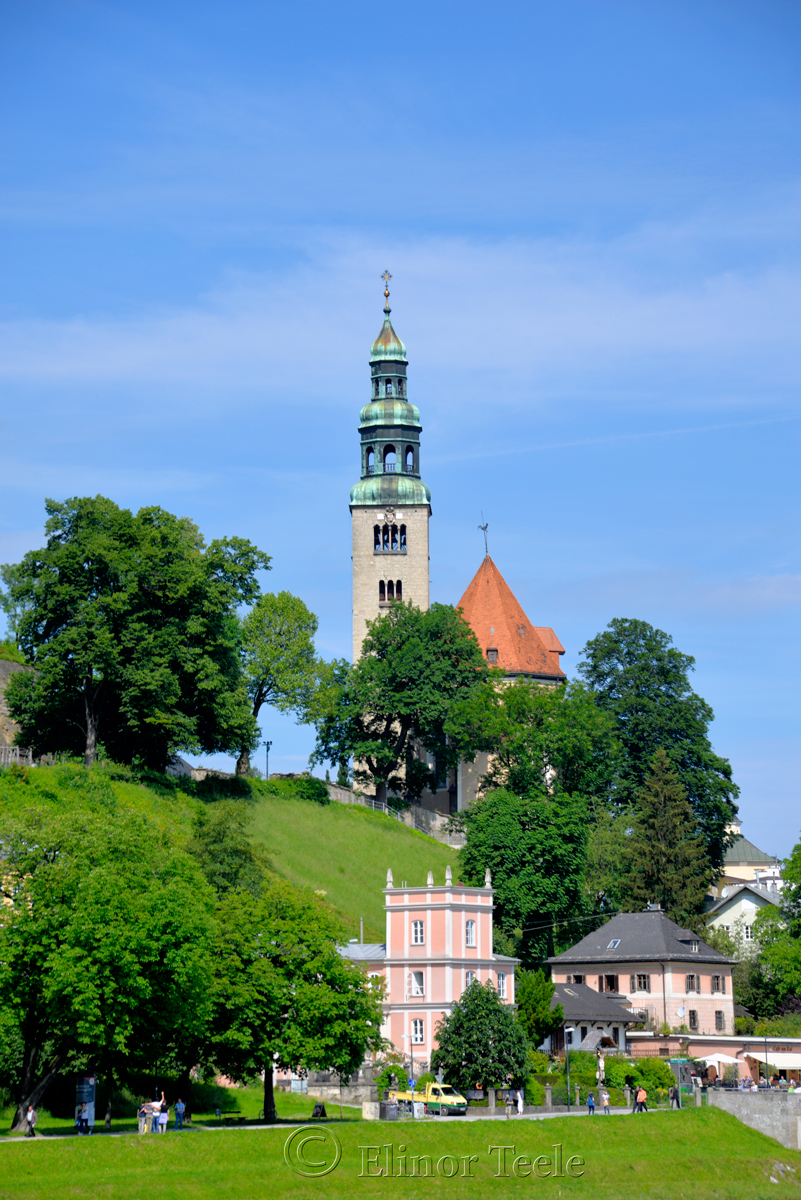Constanze Mozart Grave, Sebastiansfriedhof, Salzburg, Austria
The daughter of Mozart’s landlady in Vienna, Constanze Mozart was a character and a half. Originally, Mozart had been interested in her older sister, Aloysia. But when Aloysia turned to singing (and another man), Mozart redirected his attentions. To avoid talk by the neighbors, his future mother-in-law made him move
Continue readingConstanze Mozart Grave, Sebastiansfriedhof, Salzburg, Austria
Petersfriedhof, Salzburg, Austria 1
In tandem with Nonnberg Abbey, St. Peter’s Cemetery is the oldest Christian burial site in Salzburg (~ A.D. 700). You’ll find it at the bottom of the Festung, next to St. Peter’s Church. It’s still in use, so don’t be surprised to see Salzburg residents bringing along their grandchildren to
Harry J. Collins Grave, Petersfriedhof, Salzburg, Austria
Harry J. Collins, nicknamed “Hollywood Harry” for his eccentric behavior, was the commander of the 42nd Infantry Division during World War II. When the division was first formed, with units from 26 states and the District of Columbia, Douglas MacArthur said it would “stretch over the whole country like a
Continue readingHarry J. Collins Grave, Petersfriedhof, Salzburg, Austria
Mönchsberg, Salzburg, Austria 1
Salzburg’s old city is encircled by 3 prominent hills. The Festungberg, the Kapuzinerberg, and the Mönchsberg. The “Monk’s Mountain” is named in honor of the Benedictine monks of St Peter’s Abbey at its northern tip. It’s a grand place to take a walk. There are medieval fortifications, tree-covered alleys, and
Mönchsberg, Salzburg, Austria 2
This fine figure of a wall is the Bürgerwehr (“citizen defence”), part of the late Medieval fortifications instigated by Prince Archbishop Berhard von Rohr. Up until 1816, the area was patrolled by the Bürgergarde, a local militia. You’ll notice that the original masons used small rocks. These walls were built to
Mönchsberg, Salzburg, Austria 3
Mönchsberg’s geology doesn’t make for a particularly sturdy foundation. There have been numerous rockfalls and cleavages during its history, including a disaster on July 16, 1669 when the mountain descended on the Gstättengasse. 230 citizens, 2 churches, 13 houses, and a seminary were crushed. This – and another fatal episode in 1765
Mönchsberg, Salzburg, Austria 4
Mönchsberg owes it shape and composition to glaciers. Unlike the hill of the Festung, which is primarily limestone, Mönchsberg is a conglomerate – a solidified mass of sand, gravel, and crushed stone. This was deposited as a delta from “dying glaciers” during the time of the Mindel-Riss Interglacial period.
Müllner Kirche, Salzburg, Austria 1
Although a place of Christian worship has stood at the north end of Mönchsberg for ~1000 years, the Late Gothic incarnation that you see here – the Mülln Parish Church – was built in the 15th century. The double lantern spire was added in 1673. Although I didn’t have time to
Müllner Kirche, Salzburg, Austria 2
Mühlen means “mills,” and the northern area of the old city had a number of mills run by monasteries and convents, including Nonnberg Convent. In the medieval period, the water used for production flowed through an arm of the Almkanal.
